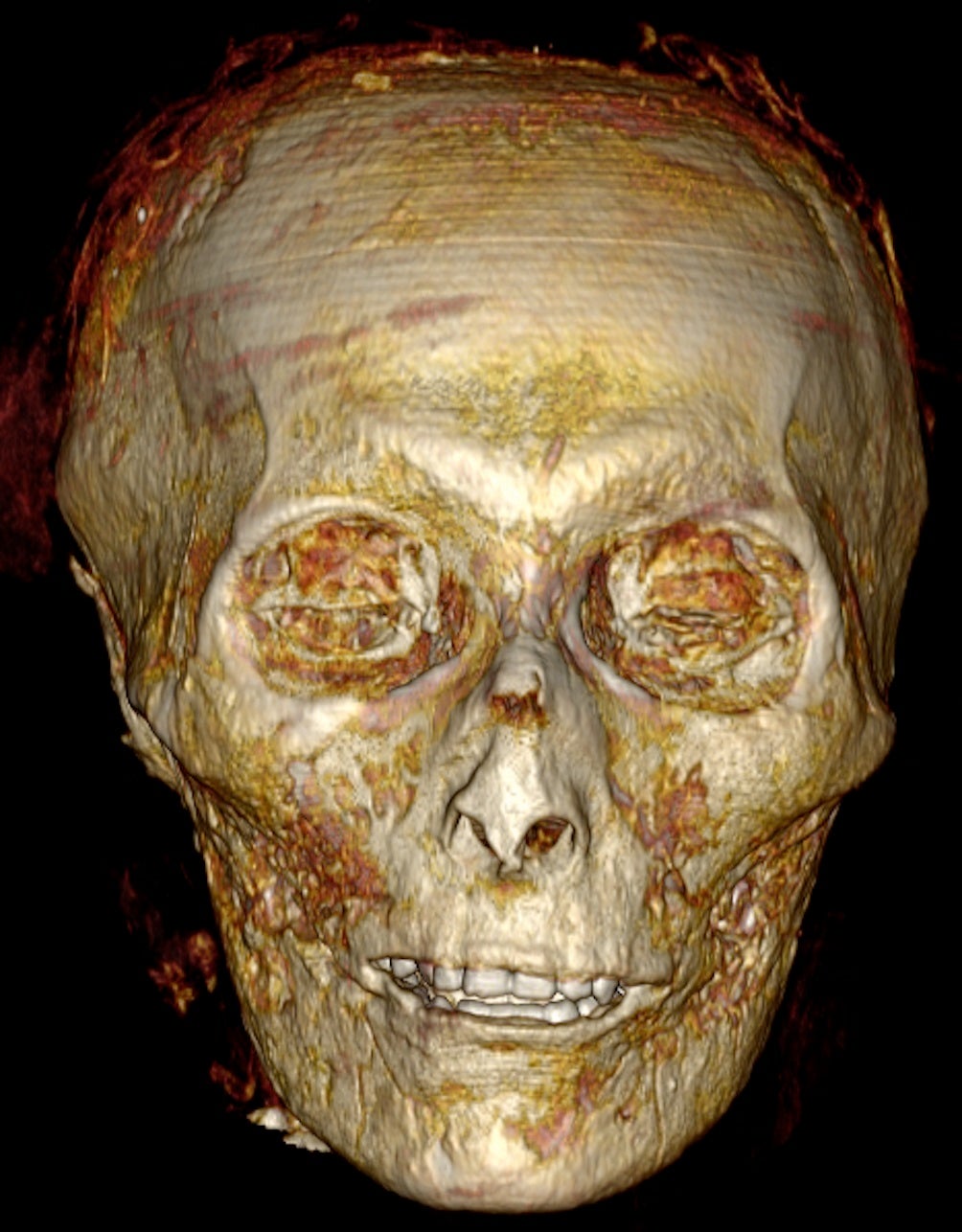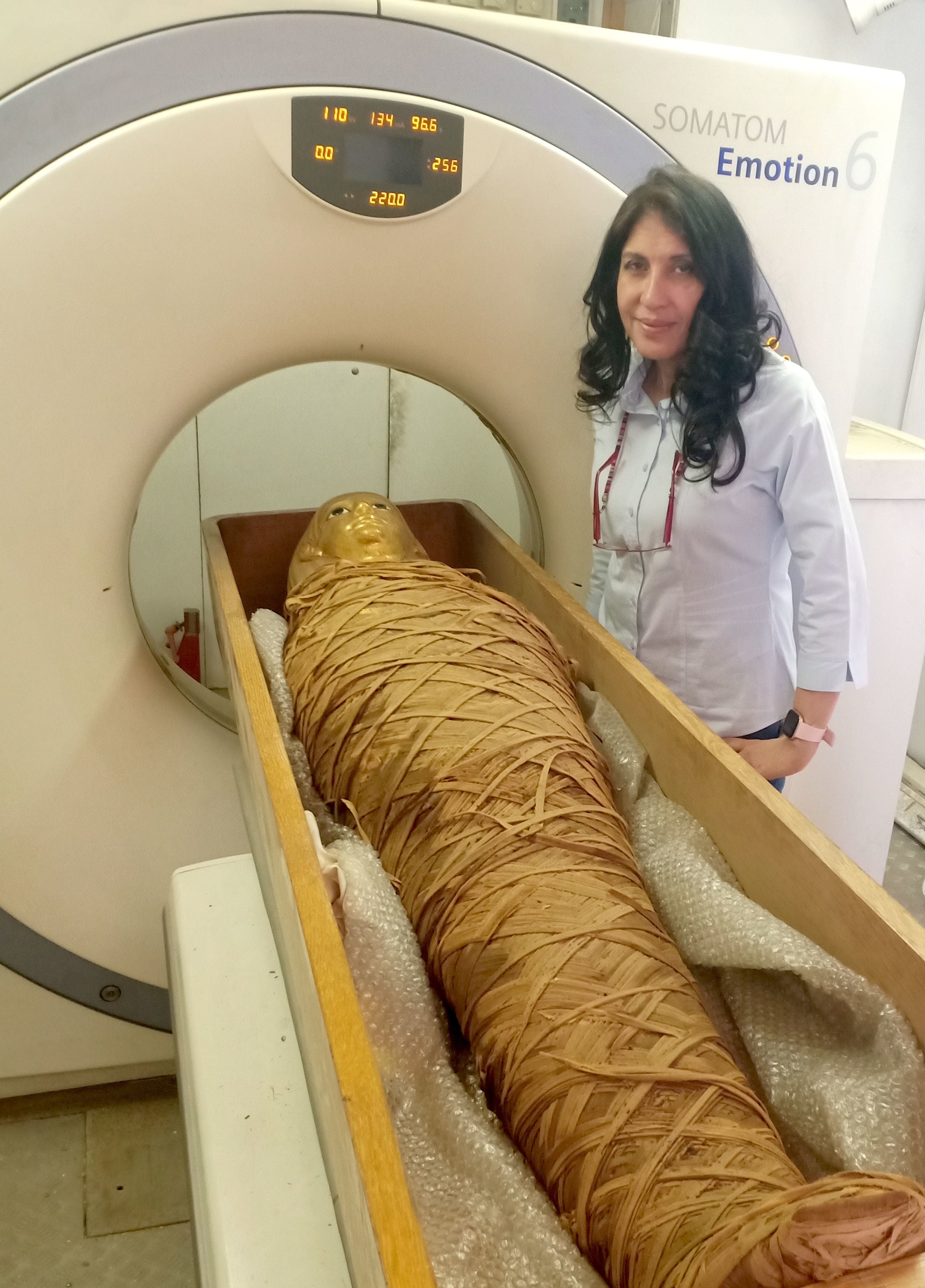Egyptian pharaoh’s mummified body digitally unwrapped after 3,500 years
Professor Saleem described the mummification process as “amazing”
Your support helps us to tell the story
From reproductive rights to climate change to Big Tech, The Independent is on the ground when the story is developing. Whether it's investigating the financials of Elon Musk's pro-Trump PAC or producing our latest documentary, 'The A Word', which shines a light on the American women fighting for reproductive rights, we know how important it is to parse out the facts from the messaging.
At such a critical moment in US history, we need reporters on the ground. Your donation allows us to keep sending journalists to speak to both sides of the story.
The Independent is trusted by Americans across the entire political spectrum. And unlike many other quality news outlets, we choose not to lock Americans out of our reporting and analysis with paywalls. We believe quality journalism should be available to everyone, paid for by those who can afford it.
Your support makes all the difference.A team of researchers has successfully digitally unwrapped the mummified body of the pharaoh Amenhotep I, who lived around 3,500 years ago.
Sahar Saleem, a professor of radiology at the faculty of medicine at Cairo University, is part of a team which has successfully unwrapped Amenhotep I using 3D computed tomography (CT) scanning technology.
The results provide fascinating details about the pharaoh’s appearance and what he was buried with.
“We show that Amenhotep I was approximately 35 years old when he died,” Professor Saleem said. “He was approximately 169cm tall [5ft 6in], circumcised, and had good teeth. Within his wrappings, he wore 30 amulets and a unique golden girdle with gold beads.
“Amenhotep I seems to have physically resembled his father… he had a narrow chin, a small narrow nose, curly hair, and mildly protruding upper teeth.”
Professor Saleem is lead author of a study published in the journal Frontiers in Medicine on Tuesday.
She commented on how well preserved the pharaoh’s body was, describing the mummification process as “amazing”: “Mummified bodies were well preserved. Even the tiny bones inside the ears were preserved. No doubt Amenhotep’s teeth were well-preserved. Many royal mummies had bad teeth, but Amenhotep I had good teeth.”

Amenhotep I was the second pharaoh of the 18th dynasty of Egypt, reigning for almost 21 years between 1526 and 1506 BC, though there is some debate over the length of his reign amongst scholars.
He ascended to the throne after the death of his father, Ahmose I. It is believed that he may have co-reigned with his mother, Ahmose-Nefertari.
Decoded hieroglyphics show that after tomb robbers damaged his remains, priests unwrapped Amenhotep in the 11thcentury BC. There is some speculation that they did so in order to reuse royal burial equipment.
However, Professor Saleem said their findings debunked these theories.

The research team has discovered Amenhotep’s brain is intact, which distinguishes him from other kings including Tutankhamun and Ramses II.
Amenhotep has not been unwrapped because of the “perfect” linen wrappings covered by garlands of delphiniums, Egyptian riverhemp and safflowers, and the beauty of his painted burial mask.
Professor Saleem likened the project to “unwrapping a gift”.
The team are yet to discover why Amenhotep died, but they remain hopeful: “We couldn’t find any wounds or disfigurement due to disease to justify the cause of death, except numerous mutilations post-mortem, presumably by grave robbers after his first burial,” said Professor Saleem. “His entrails had been removed by the first mummifiers, but not his brain or heart.
“We show that at least for Amenhotep I, the priests of the 21st dynasty lovingly repaired the injuries inflicted by the tomb robbers, restored his mummy to its former glory, and preserved the magnificent jewellery and amulets in place.”

Join our commenting forum
Join thought-provoking conversations, follow other Independent readers and see their replies
Comments